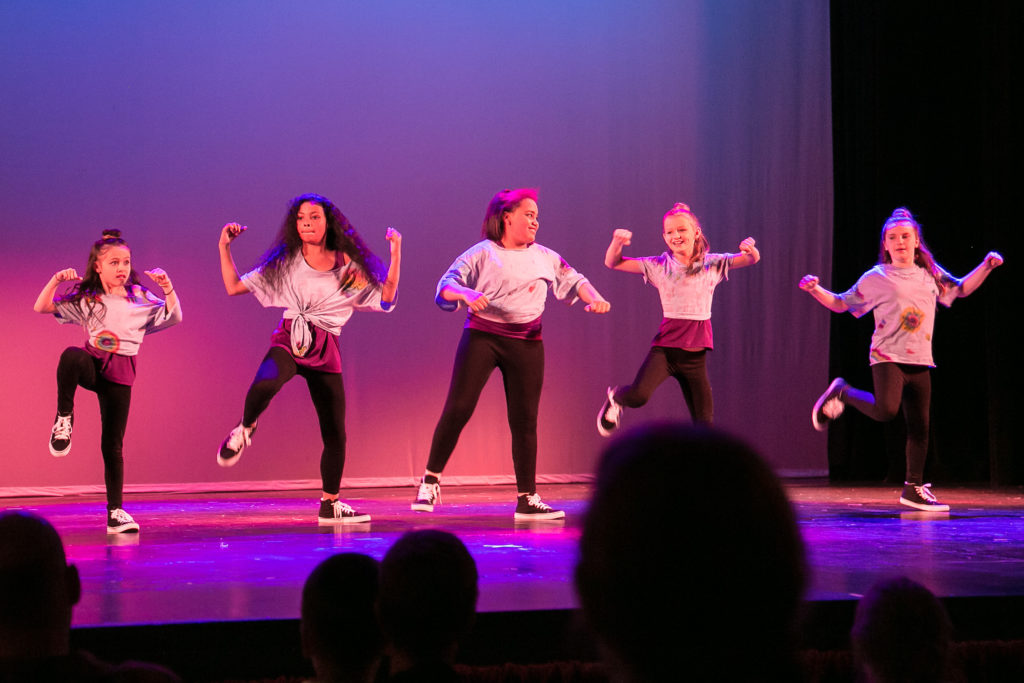
Boys & Girls Clubs of Central Minnesota Provides Innovative, High-quality Art Education Programs, Wallace Study Finds
A study of a three-year initiative indicates that Boys & Girls Clubs of America(BGCA) and its pilot affiliate Clubs, including Boys & Girls Clubs of Central Minnesota, can successfully teach high-quality arts skill-development programs to St. Cloud’s tweens.
The study, by Tracey A. Hartmann of Research for Action and Wendy McClanahan of McClanahan Associates, looked at local Clubs in the upper Midwest as part of BGCA’s Youth Arts Initiative. With the assistance of the Atlanta national headquarters, six Clubs in Minnesota and Wisconsin, acting as pilot sites, applied a set of 10 principles for success for afterschool arts programs that were developed by The Wallace Foundation. In 2014, the first phase of the initiative began with a $5.35 million, two-and-a-half year commitment to the Boys & Girls Clubs of America.
As part of the study, Boys & Girls Clubs of Central Minnesota identified four programs, including visual arts, fashion design, digital music and video production and dance, to test the impact of The Wallace Foundation’s 10 success principles. These principles served as the foundation of the Youth Arts Initiative to take Boys & Girls Clubs’ programming to the next level with professional artist guides; newly designed studio spaces; state-of-art equipment and technology; and public, culminating events that recognize talented youth.
The report, Raising the Barre + Stretching the Canvas: Implementing High Quality Arts Programming in a National Youth Serving Organization, found that local clubs can, in fact, use these principles to create and sustain high-quality programs for urban tweens. The findings also showed that young people who participated reported higher levels of engagement, developed specific artistic skills, and increased their participation at an age when many BGCA clubs see participation drop off.
“As the leading youth serving organization, Boys & Girls Clubs nationwide thrive by opening their doors to a safe, fun experience where youth participate in programs that empower them to reach their full potential,” said Boys & Girls Clubs of Central Minnesota’s Executive Director Mark Sakry. “Thanks to The Wallace Foundation, it is rewarding to see that Boys & Girls Clubs of Central Minnesota is doing its part by providing high-quality arts programming to the youth we serve in the St. Cloud metro area.”
Funding from Wallace Foundation is on a sliding path in 2017 and is scheduled to end in 2018. Boys & Girls Clubs of Central Minnesota needs the community’s help to sustain these high quality arts programs, which have proven to make a significant impact on the lives of the young people served. To find out about how you can contribute to transforming lives through Boys & Girls Clubs of Central Minnesota’s arts education program, visit www.bgcmn.org/donate-online/
Key Findings of the Report
This study by Research for Action and McClanahan Associates finds that a large, national, multidisciplinary, youth-serving organization can set up high-quality arts programs, the likes of which one would normally find in smaller, more specialized organizations.
The study explores the efforts of the Boys and Girls Clubs of America (BGCA), a federation of more than 4,000 clubhouses around the country, in the first three years of Wallace’s Youth Arts Initiative. The initiative is based on Something to Say, a 2013 study of successful arts-focused organizations that identified 10 principles their programs appear to share. BGCA, the main grantee in the initiative, is working to determine whether a much larger, generalist organization can use Something to Say’s principles to establish high-quality arts programs of its own.
BGCA introduced arts programs in clubhouses in three Midwestern cities: Milwaukee and Green Bay, Wis., and nearby St. Cloud, Minn. These clubhouses worked to implement each of the Something to Say principles, hiring professional teaching artists, establishing dedicated studios and planning for high-profile culminating events, among other activities. Three years later, researchers found that each of the new programs met all the Something to Say principles. Among their achievements:
- Ninety-six to 100 percent of participants agreed that the professional teaching artists were very good at the art forms they taught.
- Ninety-five to 100 percent agreed that the teaching artist expected them to do their best.
- Eighty-six to 98 percent reported that studios made them excited about the art.
- Eighty-nine to 97 percent felt safe in class.
- Every class had held a culminating event, many of them public, by spring 2016.
These successes required significant support from the national BGCA office, the study finds. They also required clubhouses to overcome a number of hurdles along the way. For example:
- Teaching artists often lacked experience in youth development and required significant training and support.
- Dedicated art studios challenged clubs’ usual practice of sharing spaces among several different types of programs.
- New programs required more attention from club leaders than typical BGCA programs.
- The infusion of restricted Wallace funds created some tensions between the new, well-funded arts programs and existing programs that operate on shoestring budgets.
BGCA managed to meet these challenges, the report finds. The organization is now using lessons learned from the experience to expand the effort to more clubhouses and bring the arts to larger numbers of young people.
Points of Interest
- Large, multidisciplinary organizations can establish high-quality arts programs, but they must navigate some cultural and organizational change to do so.
- Quality youth arts programs in large, national organizations need guidance from the central office.
- Professional teaching artists are necessary to create high-quality youth arts programs. But they will need training and support to work effectively with young people.
- Large, culminating events keep participants interested in youth arts programs and help attract others.
